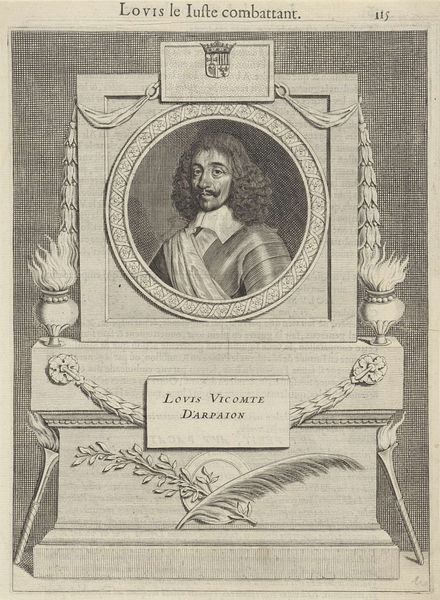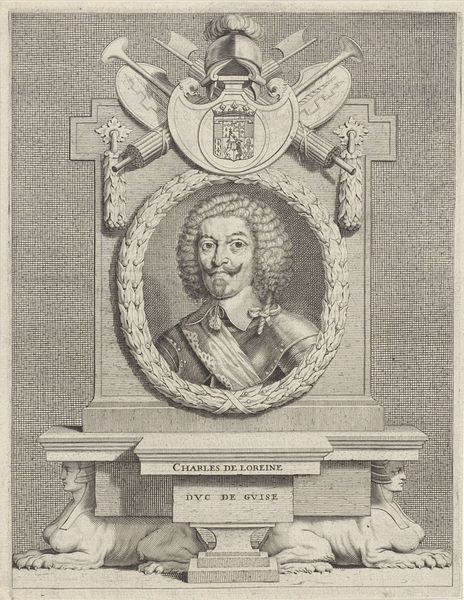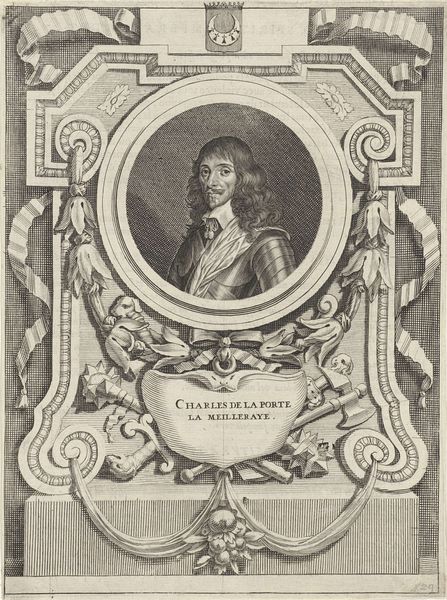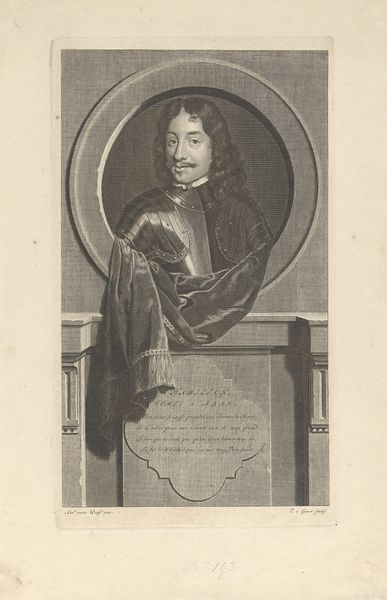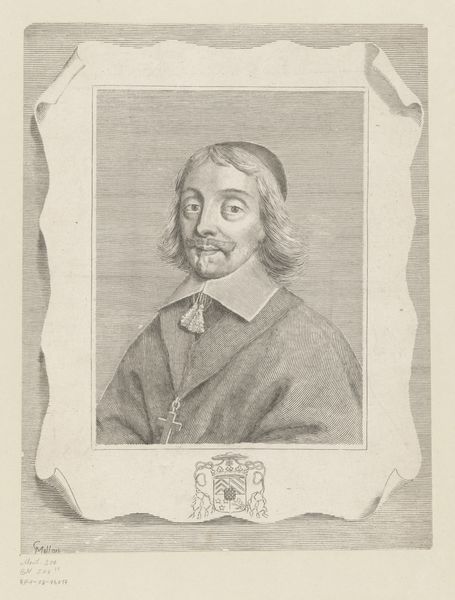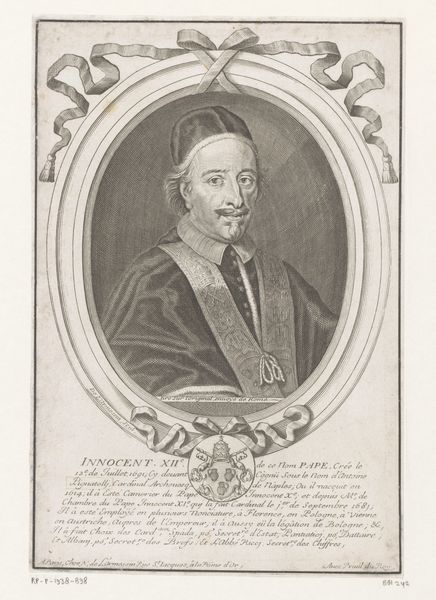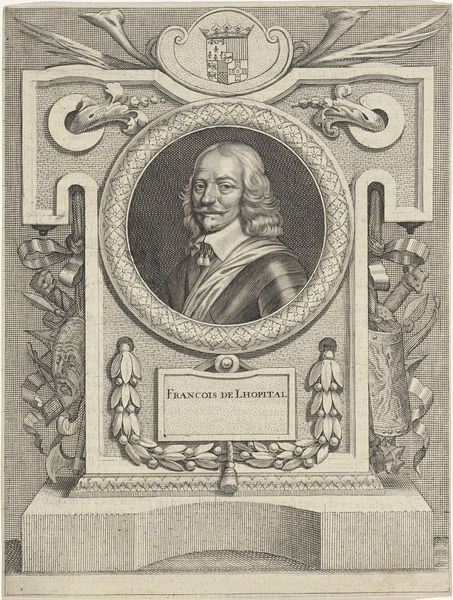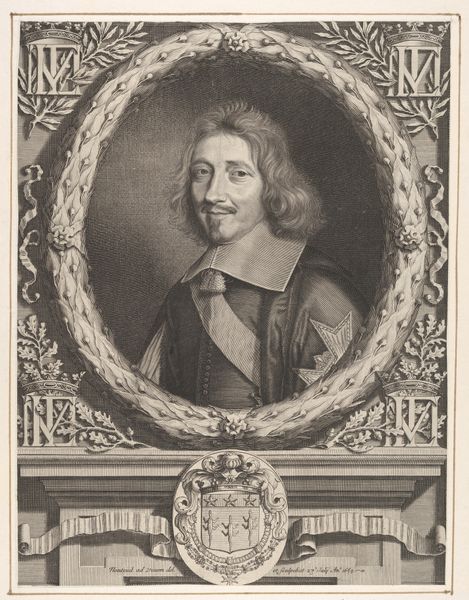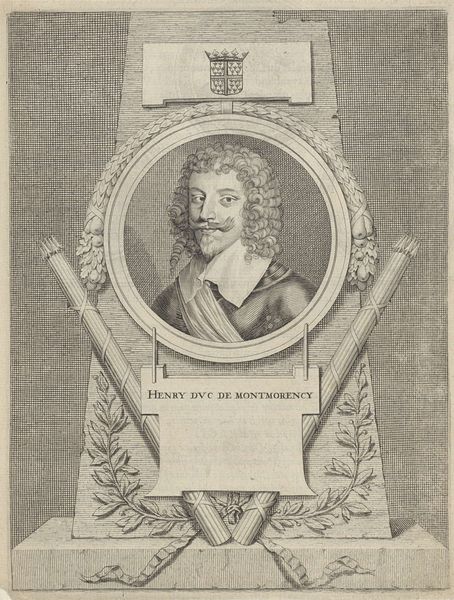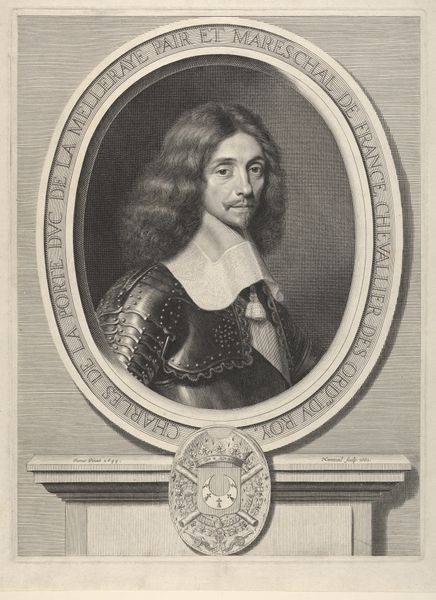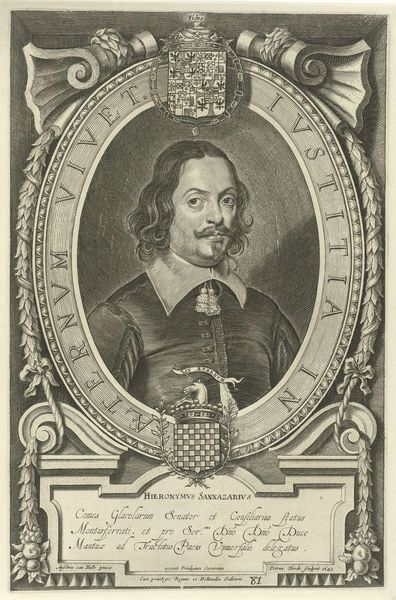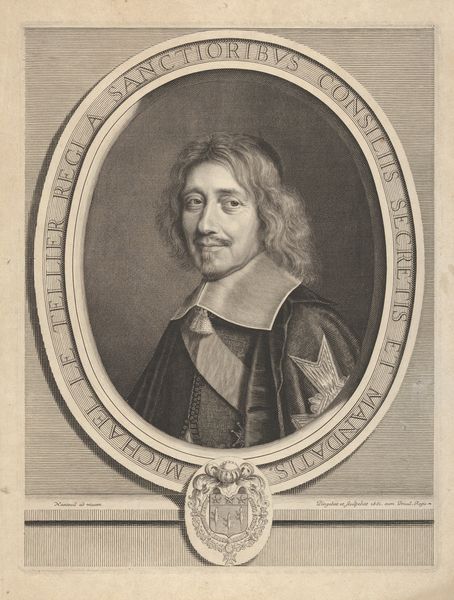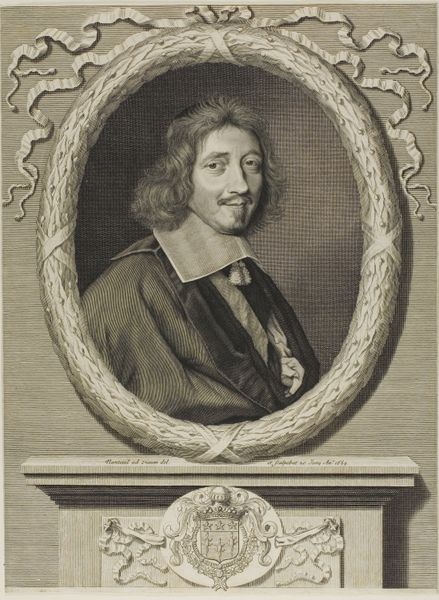
print, engraving
#
portrait
#
baroque
# print
#
old engraving style
#
historical photography
#
historical fashion
#
history-painting
#
engraving
Dimensions: height 264 mm, width 195 mm
Copyright: Rijks Museum: Open Domain
Curator: This portrait of Bernhard, Duke of Saxe-Weimar, executed as an engraving by Johannes Valdor II in 1649, immediately strikes me as rather mournful. A sense of grave formality, wouldn't you say? Editor: Absolutely, there’s a somber quality to it. It's almost neoclassical in its restraint, particularly given the baroque period. The ornamentation is very controlled. It makes you consider what it meant to have your portrait engraved at that time; who saw it, what purposes did it serve? Curator: Exactly. One can imagine multiples being made, disseminated... immortalizing a leader, but in a decidedly serious light. The frame feels like a stage or a monument; Bernhard isn’t simply *there*—he’s presented for posterity. Even his hair, beautifully long, and clothing look surprisingly up-to-date compared to how he lived! Editor: This portrayal also has its subtleties. Considering the Thirty Years’ War context, what are we to make of the softness of his gaze? It isn't a romanticized vision of military prowess. Perhaps this softer depiction aimed to legitimize him after death to cultivate alliances for his territory of Saxe-Weimar? This feels like powerful branding, designed to carefully project authority and benevolence. Curator: A very savvy point! It's not about loud power, it is a study in controlled communication, like an official statement. Maybe he never got to see it; imagine how powerful images can become only once one passes. Makes me reflect about the role of images after an artist dies; they take on lives that we cannot control. Editor: I agree; that feeling is strong here. Considering its context and purpose helps us appreciate the enduring power of this engraving, and the very careful dance of history, power, and image making it presents to us, even now. Curator: And from a personal perspective, looking at the work sparks endless storytelling; not only who was this Duke, but about how his life transcends his body in time, becoming ink in paper and, eventually, data bits in a cloud... I think that is incredibly fascinating and maybe, just maybe, a little bit sad.
Comments
No comments
Be the first to comment and join the conversation on the ultimate creative platform.
